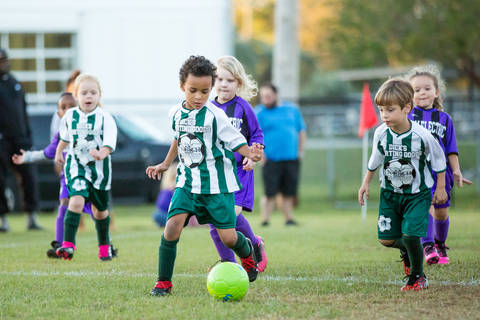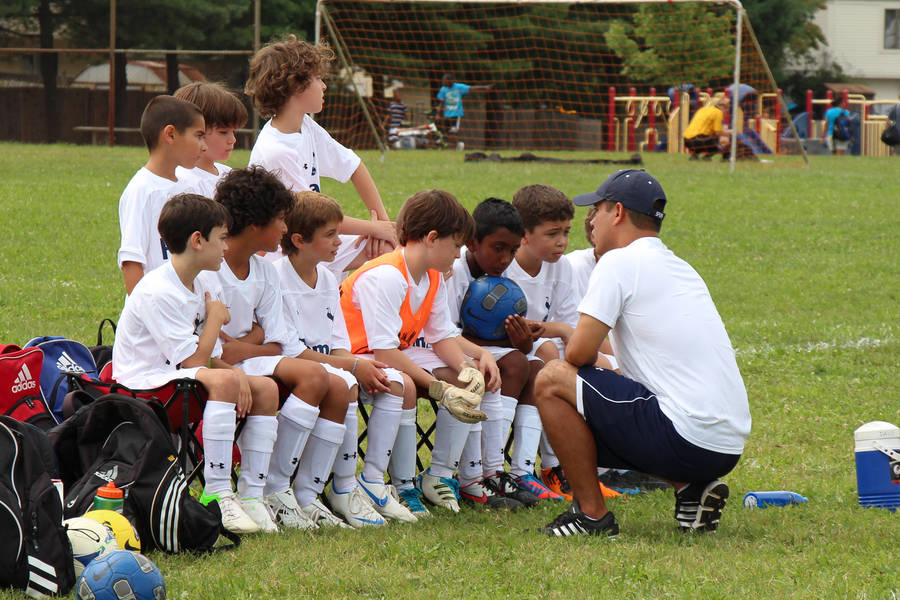
Does Youth Coaching stifle Creativity? The Importance of Street Football in Player Development As we witness the end of the career of two of the greatest players to have ever played the game in Messi & Ronaldo, we wonder when the next generational talent will come from? There is no doubt that the modern game of football is more technical that at any previous point in its history, largely influenced by both the great Messi and Ronaldo, both of whom, like many other considered greats like Pele and Maradona, developed their skills in the most humble circumstances by playing street football.
In housing estates across the country, on quiet cul-de-sacs and in concrete playgrounds tucked between tower blocks, a particular kind of game unfolds when children gather with a football.
Without referees, coaches or parental supervision, young players navigate their own world of improvised rules, shifting teams, and endless creativity to find their own version of football.
As organised youth football in the UK becomes more structured, professionalised and often pressurised, many coaches, players and football development experts are looking back to street football's organic learning environment with a renewed appreciation. But what exactly makes these informal kickabouts so valuable to a young player's development and how might we preserve their benefits in an era of carefully planned training sessions and sometimes rigid play?
Well, it is often in informal settings when players learn to improvise, take risks and develop a unique playing style that sets them apart from the rest.
Unlike the controlled setting of an academy, or even a grassroots team, street football provides an environment in which players must constantly adapt. The uneven surfaces, confined spaces and ever changing conditions demand quick thinking, agility, and precise control. Young players are forced to develop close control and intricate dribbling skills as they navigate through tight spaces against multiple opponents. The absence of strict rules develops a sense of freedom and spontaneity, allowing for natural problem solving and the development of a footballing instinct that cannot be replicated in structured coaching drills. With no coaches barking instructions from the sidelines, children are left to experiment and express themselves without fear of making mistakes. It is in this setting that confidence flourishes, and players begin to understand how to take responsibility for their own development.
Not so long ago, street football was the primary introduction to the game for most children. Legends of our game from Bobby Charlton to Wayne Rooney credit those formative hours spent playing with friends on streets and parks as crucial to their development. Yet today's children experience a very different football upbringing.
"When I was growing up in Bury, we'd be out with a ball from morning till night during school holidays," says former England international Gary Neville in a recent interview. "No adults, no formal coaching—just endless football with your mates, solving problems yourself and developing your skills through sheer repetition and enjoyment." The decline in street football across the UK reflects broader societal shifts. Increased traffic and safety concerns, the digital revolution competing for children's attention, more structured extracurricular activities and changing parental attitudes toward unsupervised play. According to Sport England's Active Lives Children and Young People Survey, the hours that children spend in self organised physical activity continue to decline year on year, with only 24% of children playing sport outside and in their neighbourhood on a regular basis.
Street football offers something that even the best designed training sessions struggle to replicate, volume of practice. A study by the Football Association found that a child playing street football for two hours might have over 500 ball touches, compared to perhaps 100 touches in an equivalent organised session focused on game understanding or tactical development.
The constraints of street environments with their narrow spaces, uneven surfaces and improvised goals, create natural learning opportunities. Playing on concrete or tarmac requires a different touch than grass. A kerb becomes an impromptu rebounder. A narrow passageway demands precise dribbling. These varied challenges cultivate well rounded technical abilities.
Beyond technical skills, street football builds psychological robustness and decision making capabilities that are difficult to bring out in adult led environments.
Dr. Forrest, a sports psychologist at Loughborough University says, "In street football, children must negotiate everything themselves." "Who plays on which team? What are the rules today? What happens in disputed situations? This develops crucial life skills such as negotiation, conflict resolution, leadership, and respect for varied abilities." Without adults to resolve disputes, children in street football must find solutions themselves. This builds resilience and problem solving skills. Similarly, the self governed nature of these games helps develop intrinsic motivation playing for the pure joy of participation rather than to satisfy external rewards or adult approval.
The fluid nature of street football, where players might switch teams several times or adjust rules to accommodate new arrivals, cultivates adaptability. Players learn to read the game situationally rather than applying fixed tactical instructions.
Perhaps the most valuable aspect of street football is how it nurtures creativity and personal expression. Without coaches providing constant instruction or imposing tactical frameworks, children are free to experiment, take risks and develop their own style of play.
"We're seeing more technically competent players coming through academies than ever before," observes Tony Carr, the former West Ham United Academy Director who helped develop players like Frank Lampard and Rio Ferdinand. "But sometimes they lack that spark of individuality, that ability to do the unexpected that differentiates the very best players." Street football's emphasis on taking on opponents and expressing personality through play allows young footballers to develop signature styles and creative approaches. The social currency in street football often comes from performing a brilliant piece of skill or scoring a memorable goal, not necessarily from following tactical instructions or making the percentage play.
Beyond the football development benefits, street football serves as a powerful social connector. It brings together children of different ages, backgrounds and ability levels in a shared activity that crosses cultural and socioeconomic boundaries.
"Some of my most important childhood friendships were formed through street football," says Ian Wright, the former Arsenal and England striker who grew up in South London. "You'd turn up at the park, not knowing who else would be there, and within minutes you're fully immersed in a game with kids you might not otherwise have met."
This mixing of ages and abilities creates natural mentoring relationships. Younger or less skilled players learn from watching and playing alongside more advanced peers, while older children develop leadership and teaching skills. The multi-age environment also exposes players to different physical challenges, a nine year old must find creative solutions when playing against teenagers, developing agility and cunning rather than relying on their physical attributes alone.
While few people would advocate abandoning structured coaching entirely, many football development experts now recognise the need to incorporate street football's benefits into formal training environments. Forward thinking coaches and grassroots clubs are finding ways to blend the best of both worlds.
Progressive coaches are increasingly designating portions of training sessions as "free play" periods with minimal intervention. During these segments, players might organise their own small sided games, experiment with skills or play adapted versions of street games like "Wembley" or "World Cup." In the end, the legacy of street football is one of boundless creativity and passion. It has shaped some of the greatest players in history and will continue to be a crucial part of football’s future. As long as there are young players with a ball at their feet and an open space to play, the game will benefit from a pipeline of highly skilled players emerging.

















